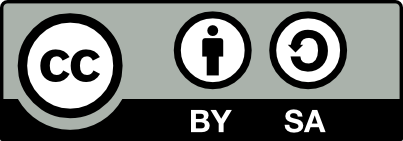Abstract
Acoustic barriers which are positioned along traffic lanes are designed to protect the surroundings from excessive noise. Such structures are to reverberate, diffract and damp the propagating acoustic waves. However, this method of shielding has some disadvantages which include constraint visibility and structure-born noise. The interaction between traffic-caused movement of air mass and acoustic barriers may generate infra noise waves. That is undesirable and should be estimated. The authors undertook the research to diagnose the plausible side effect of structure-born noise of such barriers because it may influence human body (Kasprzak, 2014). As a mechanical structure, the acoustic barrier is characterized by mechanical parameters which, in the field of modal analysis, are made up of natural frequencies, damping factors and mode shapes. In this paper the authors investigated the acoustic pressure distribution in the neighborhood of a real acoustic barrier in the scope of infra noise propagation. The methods of modal analysis were used to identify natural frequencies of the barrier and dominating frequencies of propagating waves in the far field. The correlation between observed vibration and acoustic signals is presented.Keywords:
modal analysis, infra range noise, vibration, acoustic barrier, road trafficReferences
1. Borchi F., Carfagni M., Martelli L., Turchi A., Argenti F. (2016), Design and experimental tests of active control barriers for low-frequency stationary noise reduction in urban outdoor environment, Applied Acoustics, 114: 125–135, https://doi.org/10.1016/j.apacoust.2016.07.020.
2. Carlile S., Davy J.L., Hillman D., Burgemeister K. (2018), A review of the possible perceptual and physiological effects of wind turbine noise, Trends in Hearing, 22: 1–10, https://doi.org/10.1177/2331216518789551.
3. Degan A. (2003), Acoustic barriers: performance and experimental measurements, Tecniacustica, Bilba.
4. Ewins D.J. (2000), Modal Testing: theory, practice and application, Research Studies Press Ltd., Letchworth, Herts, England.
5. Ishizuka T., Fujiwara K. (2003), Performance of noise barriers with various edge shapes and acoustical conditions, Kyushu Institute of Design.
6. Kaczmarska A., Augustyńska D., Łuczak A. (2008), Infrasonic noise at workplaces in offices requiring employee’s special attention focus [in Polish: Hałas infradźwiękowy na stanowiskach pracy wymagających koncentracji uwagi – propozycja kryterium uciążliwości], Occupational Safety. Science and Practice, 2008(7–8): 28–32, http://archiwum.ciop.pl/28638.
7. Kasprzak C. (2014), The influence of infrasounds on the Sensory Motor Rhythm (SMR) of EEG Signal, Forum Acusticum, 7–12 September 2014, Cracow, Poland.
8. Peiró-Torres M.P., Redondo J., Bravo J.M., Sánchez Pérez J.V. (2016), Open noise barriers based on sonic crystals. Advances in noise control in transport infrastructures, Transportation Research Procedia, 18: 392 – 398, https://doi.org/10.1016/j.trpro.2016.12.051.
9. Remington P.J. (1997), Experimental and theoretical studies of vibrating systems, Encyclopedia of Acoustics,Vol. 2, John Wiley & Sons.
10. Serraris J. (2016), Propagation of sound around different noise barrier models using a three-dimensional scan based sound visualization technique, Noise Control Engineering Journal, 64(2): 134–141, https://doi.org/10.3397/1/376366.
2. Carlile S., Davy J.L., Hillman D., Burgemeister K. (2018), A review of the possible perceptual and physiological effects of wind turbine noise, Trends in Hearing, 22: 1–10, https://doi.org/10.1177/2331216518789551.
3. Degan A. (2003), Acoustic barriers: performance and experimental measurements, Tecniacustica, Bilba.
4. Ewins D.J. (2000), Modal Testing: theory, practice and application, Research Studies Press Ltd., Letchworth, Herts, England.
5. Ishizuka T., Fujiwara K. (2003), Performance of noise barriers with various edge shapes and acoustical conditions, Kyushu Institute of Design.
6. Kaczmarska A., Augustyńska D., Łuczak A. (2008), Infrasonic noise at workplaces in offices requiring employee’s special attention focus [in Polish: Hałas infradźwiękowy na stanowiskach pracy wymagających koncentracji uwagi – propozycja kryterium uciążliwości], Occupational Safety. Science and Practice, 2008(7–8): 28–32, http://archiwum.ciop.pl/28638.
7. Kasprzak C. (2014), The influence of infrasounds on the Sensory Motor Rhythm (SMR) of EEG Signal, Forum Acusticum, 7–12 September 2014, Cracow, Poland.
8. Peiró-Torres M.P., Redondo J., Bravo J.M., Sánchez Pérez J.V. (2016), Open noise barriers based on sonic crystals. Advances in noise control in transport infrastructures, Transportation Research Procedia, 18: 392 – 398, https://doi.org/10.1016/j.trpro.2016.12.051.
9. Remington P.J. (1997), Experimental and theoretical studies of vibrating systems, Encyclopedia of Acoustics,Vol. 2, John Wiley & Sons.
10. Serraris J. (2016), Propagation of sound around different noise barrier models using a three-dimensional scan based sound visualization technique, Noise Control Engineering Journal, 64(2): 134–141, https://doi.org/10.3397/1/376366.



